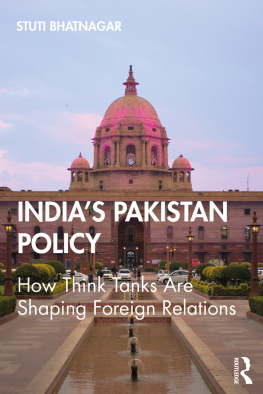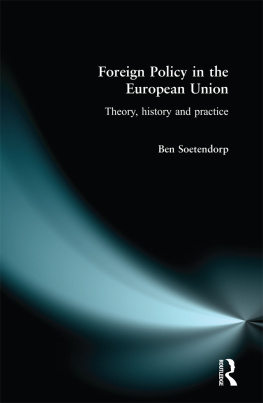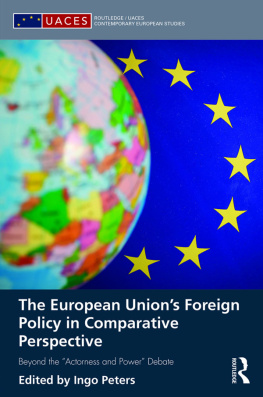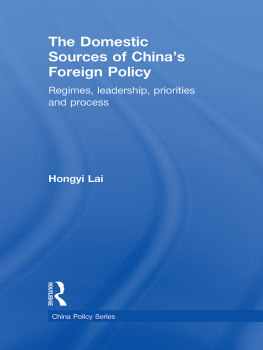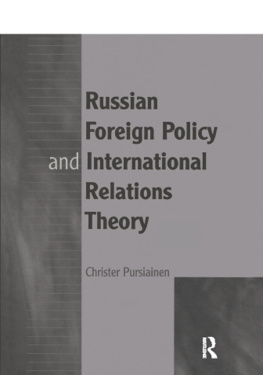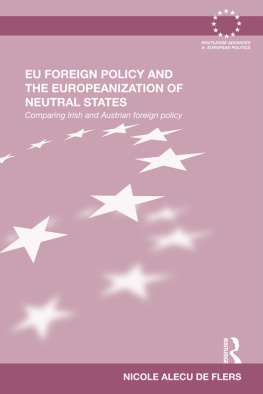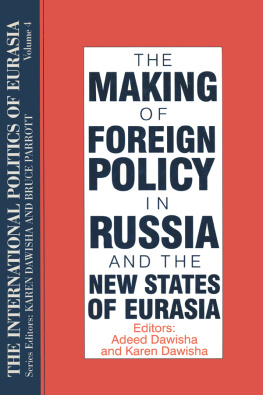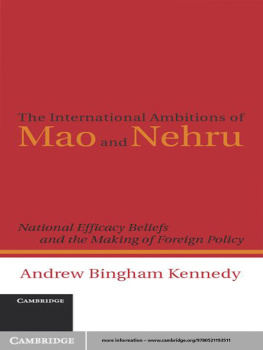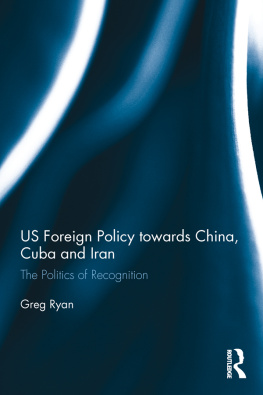Cover
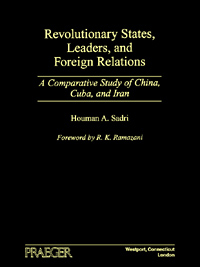
| title | : | Revolutionary States, Leaders, and Foreign Relations : A Comparative Study of China, Cuba, and Iran |
| author | : | Sadri, Houman A. |
| publisher | : | Greenwood Publishing Group |
| isbn10 | asin | : | 0275953211 |
| print isbn13 | : | 9780275953218 |
| ebook isbn13 | : | 9780313047664 |
| language | : | English |
| subject | International relations, Revolucionarios, Revolutionaries, Gobiernos comparados, Comparative government, Iran--Foreign relations--1979-1997, Irn--Relaciones exteriores--1979, China--Foreign relations--1949- , China (Repblica Popular, 1949)--Relaciones |
| publication date | : | 1997 |
| lcc | : | JZ1315.S23 1997eb |
| ddc | : | 327.1/01 |
| subject | : | International relations, Revolucionarios, Revolutionaries, Gobiernos comparados, Comparative government, Iran--Foreign relations--1979-1997, Irn--Relaciones exteriores--1979, China--Foreign relations--1949- , China (Repblica Popular, 1949)--Relaciones |
Page i
Revolutionary States, Leaders, and Foreign Relations
Page ii
This page intentionally left blank.
Page iii
Revolutionary States, Leaders, and Foreign Relations
A Comparative Study of China, Cuba, and Iran
Houman A.Sadri
Foreword by R.K.Ramazani

Page iv
Library of Congress Cataloging-in-Publication Data
Sadri, Houman A.
Revolutionary states, leaders, and foreign relations: a
comparative study of China, Cuba, and Iran/Houman A.Sadri;
foreword by R.K.Ramazani.
p. cm.
Includes bibliographical references and index.
ISBN 0-275-95321-1 (alk. paper)
1. International relations. 2. Revolutionaries. 3. Comparative
government. 4. IranForeign relations19795. ChinaForeign
relations1949- 6. CubaForeign relations1959 I. Title.
JX1395.S18 1997
327.101dc20 9632468
British Library Cataloguing in Publication Data is available.
Copyright 1997 by Houman A.Sadri
All rights reserved. No portion of this book may be
reproduced, by any process or technique, without the
express written consent of the publisher.
Library of Congress Catalog Card Number: 9632468
ISBN: 0-275-95321-1
First published in 1997
Praeger Publishers, 88 Post Road West, Westport, CT 06881
An imprint of Greenwood Publishing Group, Inc.
Printed in the United States of America

The paper used in this book complies with the
Permanent Paper Standard issued by the National
Information Standards Organization (Z39.481984).
10 9 8 7 6 5 4 3 2
Page v
This book is dedicated to my
parents, Khosrow and Zoheida,
who sowed the seeds of
knowledge in their
four children and
taught us that the best
investment in life is
one in education.
Neda, Negar, Sam, and I
are indebted to you forever.
Page vi
This page intentionally left blank.
Page vii
CONTENTS
Foreword | ix |
Preface | xi |
Introduction | |
| Typology and Terminology of Revolutions | |
| Non-Alignment as a Foreign Policy Strategy | |
| Chinese Foreign Relations, 19491959 | |
| Cuban Foreign Relations, 19591969 | |
| Iranian Foreign Relations, 19791989 | |
| Conclusion | |
Selected Bibliography | |
Index | |
Page viii
This page intentionally left blank.
Page ix
FOREWORD
The contribution of Professor Sadris study may be assessed from three perspectives. First, his plea for a better understanding of the behavior of revolutionary states, especially those of the Third World, is fully compatible with the age-old awareness in the political science community of the general need to bridge the persistent gap between the study of comparative politics and international relations. More than three decades ago, I reiterated this need in suggesting the dynamic triangular interaction approach to the study of foreign policy and applied it to the foreign policy of Iran. Quincy Wright, who was then the preeminent American specialist on international relations and law, considered my study to be a a basis for a theory of international politics and particularly of the foreign policy of small states. I consider Sadris study helpful in narrowing the divide between the literature on revolution and on international relations.
Second, Sadri strikes a healthy balance in comparing the foreign policy behavior of China, Cuba and Iran in the first decade after revolution in terms of differences and similarities. He points out the differences in size and resources, military capability, character of non-alignment strategies, institutions, and leadership, although the greatest emphasis is placed on the phenomenon of leadership. He also outlines similarities such as radical departure of revolutionary regimes from the foreign policy orientation of the old regimes, particularly in relations with the United States, the common element of nationalism as a major influence in foreign policy making in spite of Communist and Islamist ideologies at work, and the rise of moderating influences in the shaping of foreign policy.
Regarding this latter observation, Sadri seems to be closer to the position of Kenneth N.Waltz who, like other neorealists, claims that revolutionary states will be socialized to the international system rather than to Henry Kissinger, who like other classical realists, generally views revolutionary regimes as a threat to the
Page x
system. In his new landmark study, Revolution and War, Stephen M.Walt contends that the Waltzian view is only partly correct, particularly as judged by the persistence of Soviet, Chinese and Iranian Revolutionary objectives far longer than was necessary.
Finally, although Sadri does not specifically deal with the implications of his study for future American policy toward revolutionary regimes, his plea for a better understanding of their foreign policy behavior may be interpreted as implying that there is a need for a more sophisticated and nuanced U.S. policy. Our friends and allies everywhere, especially in Europe, strongly disagree with hostile U.S. policies toward these states. They advocate a policy of critical engagement, not appeasement, as a constructive way of moderating these regimes foreign policy positions because their greater involvement in the international system rather than isolation, would constrain their behavior. It would also strengthen the hands of moderate elements within revolutionary societies. On the contrary, a belligerent policy will play into the hands of the more radical factions and will eventually hurt the United States national interest.
Next page


